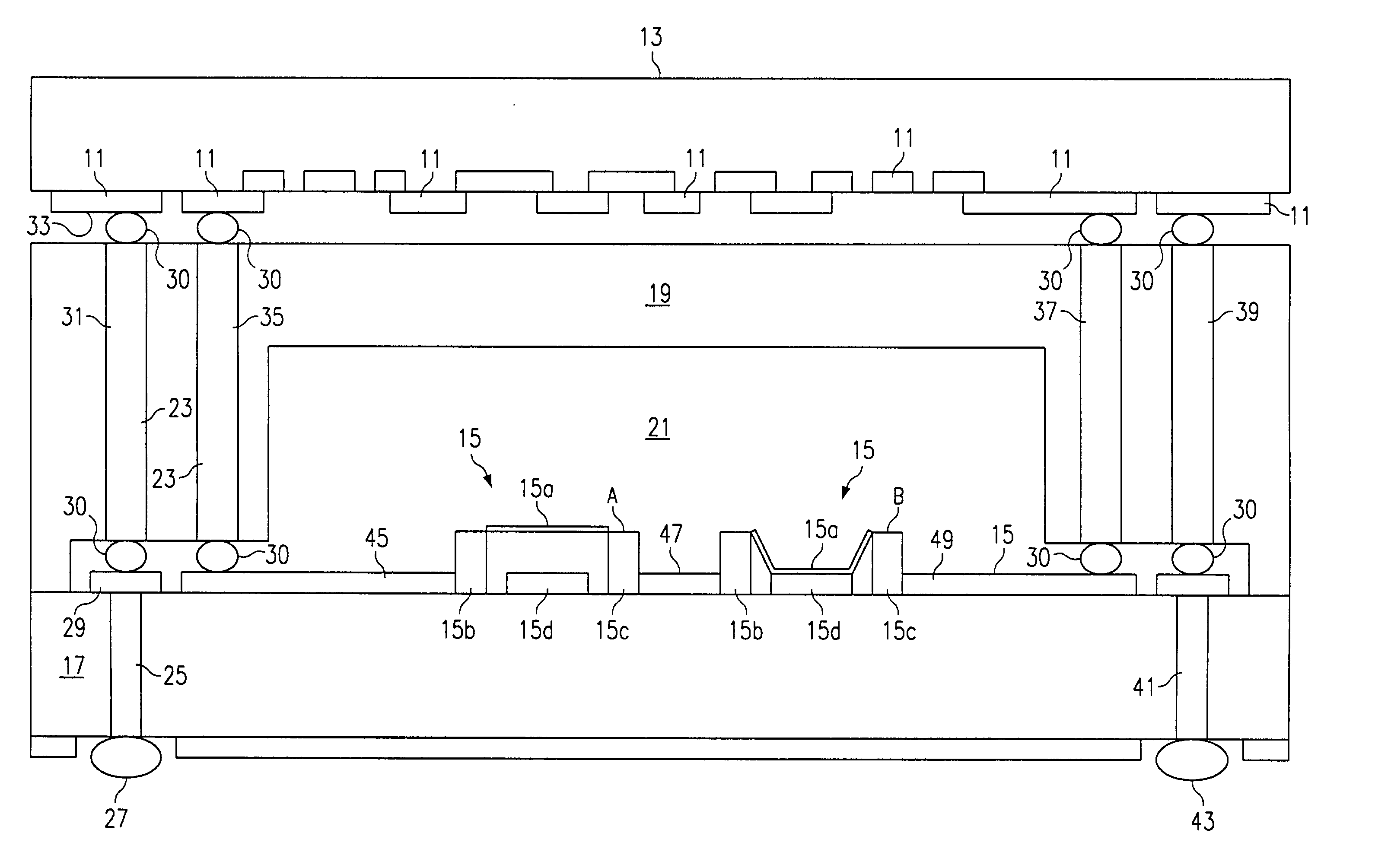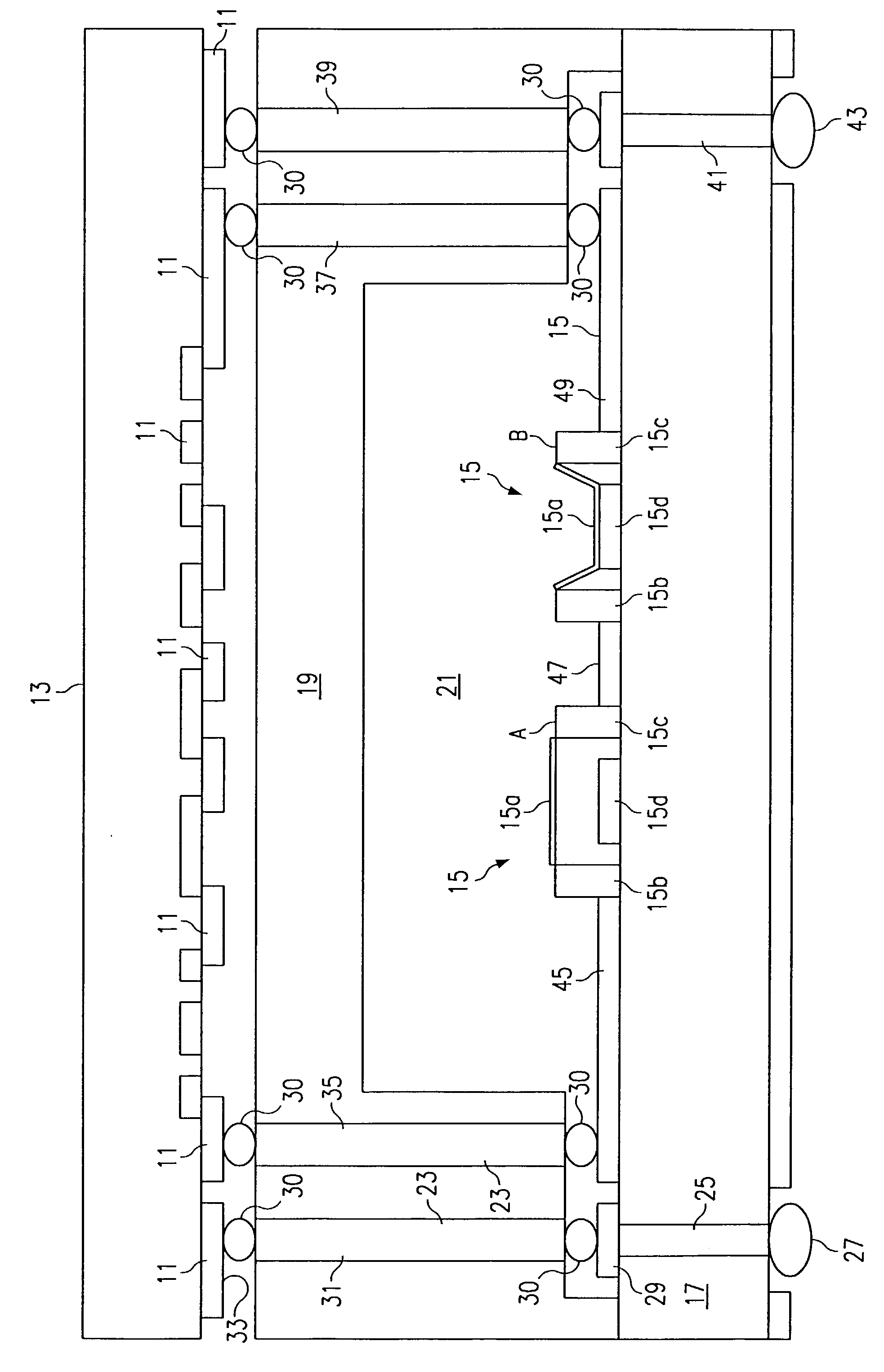Wafer level interconnection
a technology of microelectromechanical systems and wafers, applied in the field of rf mems (microelectromechanical system) technology, can solve the problems of many hetero-junction technologies, epitaxial methods, and substrate materials that are considered incompatible with rf mems fabrication technology, and the rf performance of the circuit can be limited
- Summary
- Abstract
- Description
- Claims
- Application Information
AI Technical Summary
Benefits of technology
Problems solved by technology
Method used
Image
Examples
Embodiment Construction
[0017] According to one embodiment of the present invention illustrated in FIG. 1 vertical electrical interconnection between the electronics circuitry 11 on one low-resistivity SiGe substrate 13 and RF MEMS circuitry 15 on a separate high resistivity silicon (HR) substrate 17. The low-resistivity substrate material 13 may also be silicon CMOS or gallium arsenide (GaAS) substrate. This is accomplished by using wafer fabrication techniques to construct a conductive metalization layer on either the primary (i.e., RF MEMS) substrate 17 or the secondary (i.e., other electronics) substrate 13. A dielectric lid 19 is spaced between the electronics circuitry 11 on the substrate 13 and the high resistivity substrate 17 and provides a canopy or lid over the RF MEMS circuitry 15 leaving a gap 21 over the RF MEMS circuitry 15. The gap 21 is filled with an inert environment such as a gas such as nitrogen or a vacuum. The lid 19 may be made of Pyrex, quartz or glass and is made of a material wit...
PUM
 Login to View More
Login to View More Abstract
Description
Claims
Application Information
 Login to View More
Login to View More - R&D
- Intellectual Property
- Life Sciences
- Materials
- Tech Scout
- Unparalleled Data Quality
- Higher Quality Content
- 60% Fewer Hallucinations
Browse by: Latest US Patents, China's latest patents, Technical Efficacy Thesaurus, Application Domain, Technology Topic, Popular Technical Reports.
© 2025 PatSnap. All rights reserved.Legal|Privacy policy|Modern Slavery Act Transparency Statement|Sitemap|About US| Contact US: help@patsnap.com


